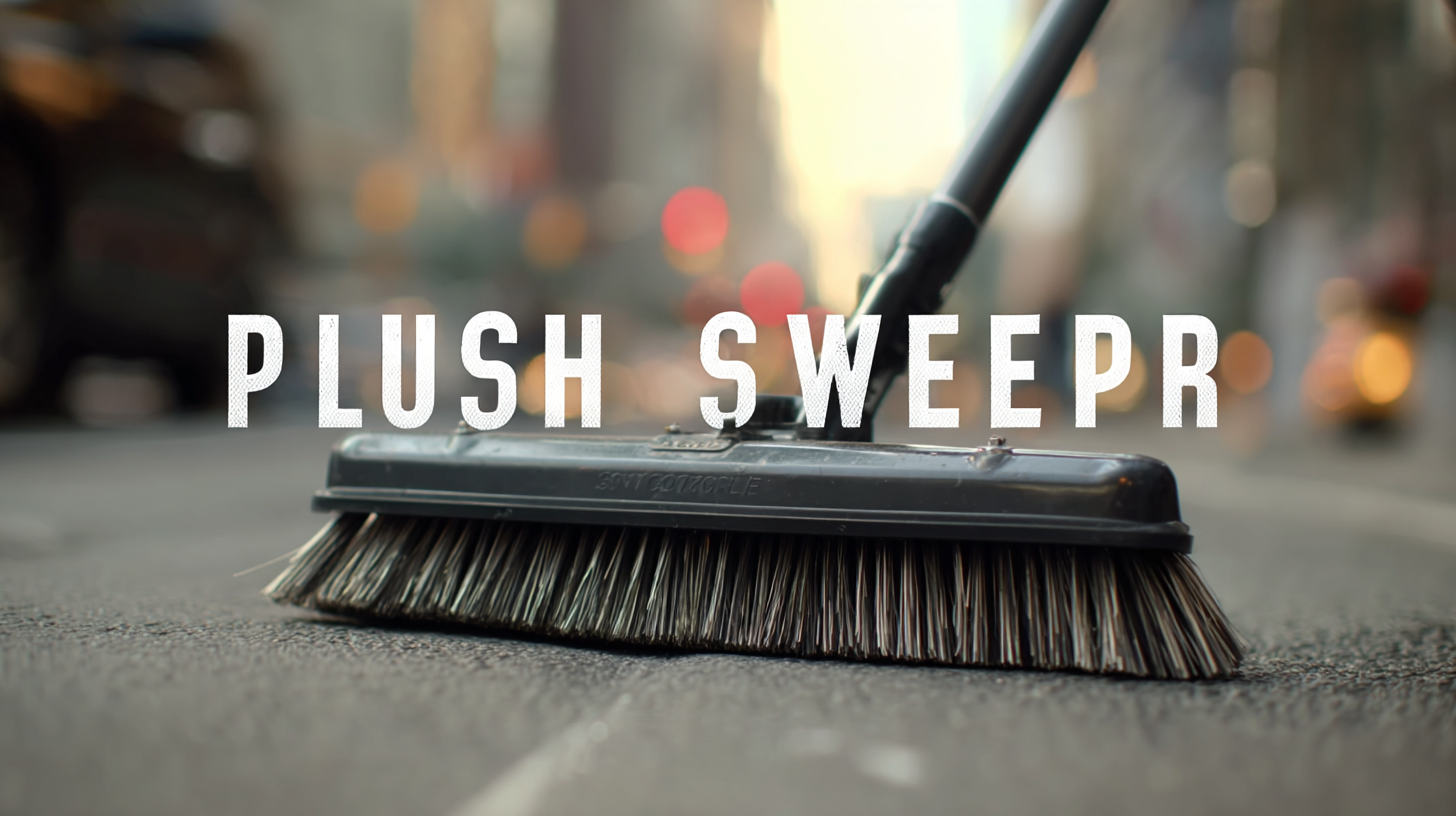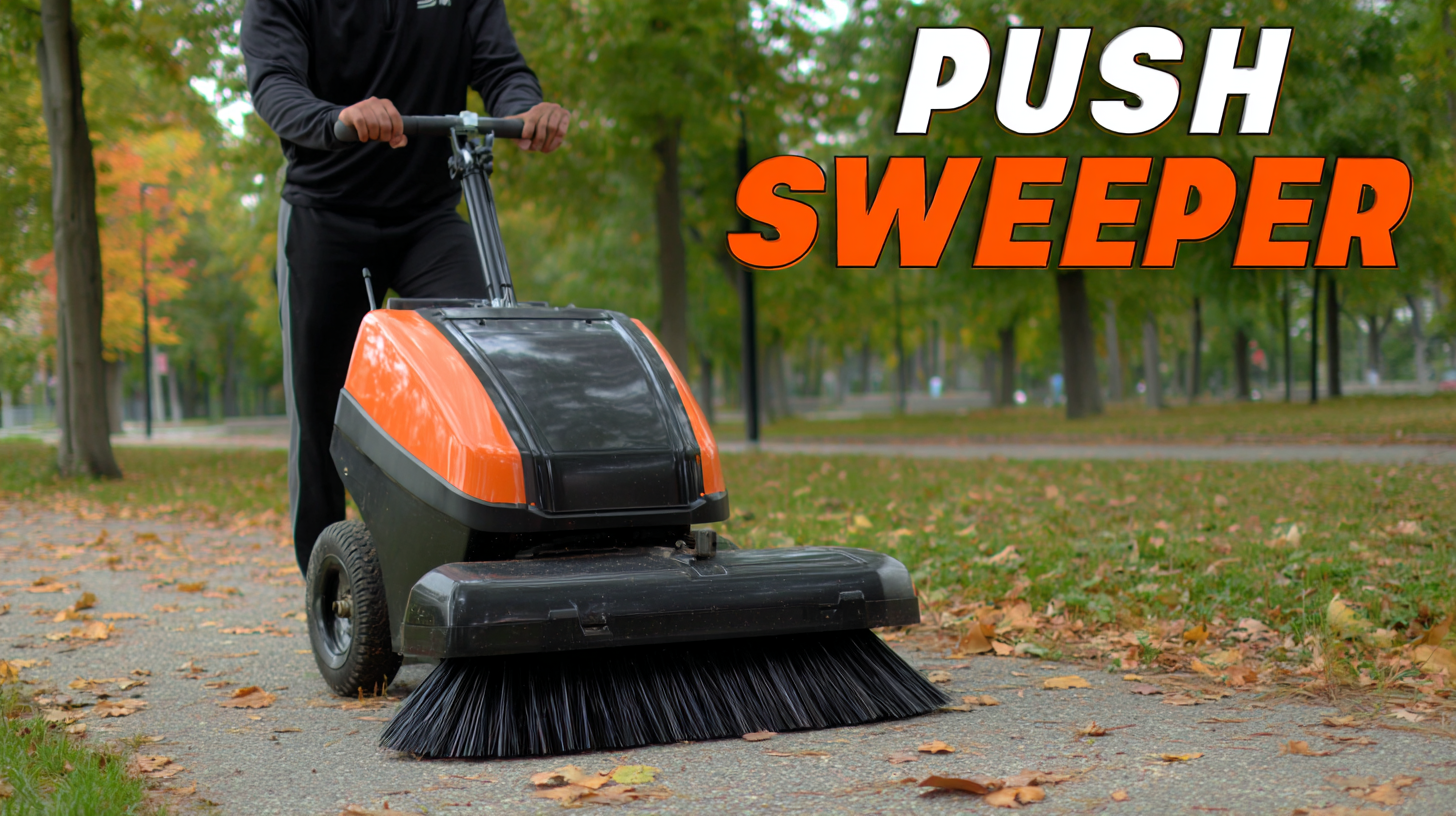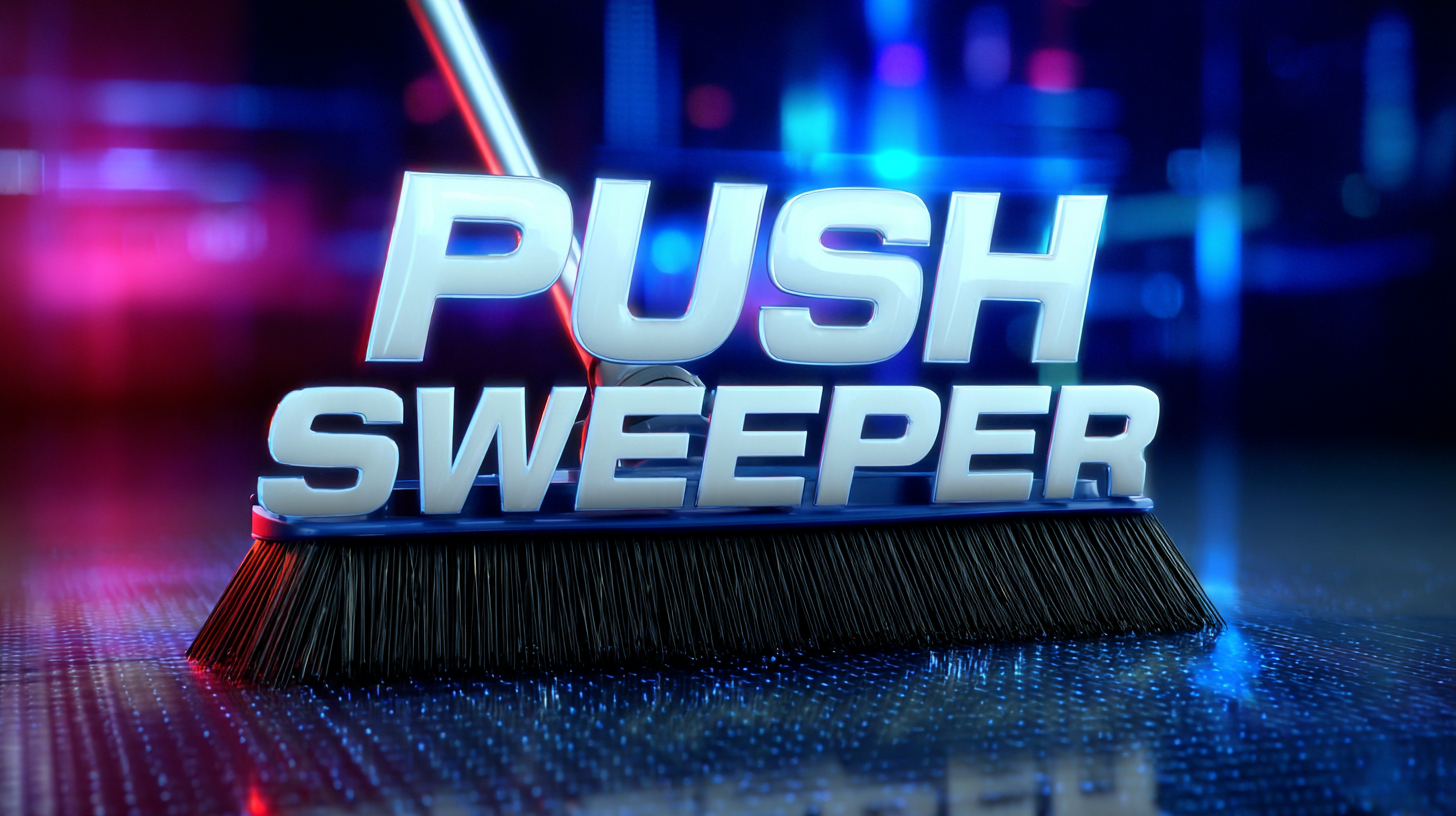In today's competitive business landscape, maintaining a clean and efficient workplace is paramount, making the selection of the right equipment crucial. A recent market analysis by Grand View Research indicates that the global industrial cleaning equipment market is expected to reach $15.7 billion by 2027, with push sweepers playing a significant role due to their versatility and effectiveness in various settings. However, with a myriad of options available, choosing the best push sweeper for your business can present several challenges.

Factors such as floor type, debris size, and operational efficiency must be carefully evaluated to ensure optimal performance and cost-effectiveness. This blog will explore industry application cases and provide a "how to" guide for businesses looking to make informed decisions regarding push sweeper selection.
Choosing the right push sweeper for your business involves a careful analysis of your specific needs, with various factors significantly influencing the decision-making process. According to a report by IBISWorld, the commercial cleaning services industry is projected to reach $78 billion in revenue by 2024, which highlights the growing importance of efficient cleaning solutions. Businesses must first assess the size of the area that needs to be cleaned; larger spaces may require more robust sweepers with wider cleaning paths and greater capacity for debris collection.
Additionally, consider the type of surfaces your push sweeper will be used on. A survey by Allied Market Research indicates that 74% of facility managers prioritize the versatility of cleaning equipment. Push sweepers vary in their effectiveness on different surfaces such as asphalt, concrete, and tile, affecting overall cleaning efficiency. Furthermore, reviewing ergonomics and ease of use is essential, particularly for businesses where staff turnover is high. Reports indicate that ease of operation can reduce cleaning time by up to 30%, empowering employees to perform tasks more effectively while minimizing fatigue. Such insights underscore the critical nature of aligning the features of a push sweeper with your business's unique operational demands.
| Factor | Description | Importance (1-5) | Considerations |
|---|---|---|---|
| Size and Design | Evaluate the workspace size to choose an appropriately sized sweeper. | 4 | Compact for small areas; bigger models for large spaces. |
| Weight Capacity | Consider the maximum load the sweeper can handle. | 5 | Ensure it meets your specific cleaning material needs. |
| Type of Cleaning Surface | Identify if the sweeper is intended for indoor, outdoor, or specific surface types. | 5 | Different models work better on asphalt, concrete, or turf. |
| Budget | Establish the financial resources available for purchasing a sweeper. | 3 | Compare costs vs. features for best value. |
| Maintenance Requirements | Assess how easy it is to maintain and service the sweeper. | 4 | Regular maintenance can affect longevity and efficiency. |
| User-Friendliness | Consider how easy it is for staff to operate the sweeper. | 4 | Training needs can affect operational efficiency. |
 When choosing a push sweeper for your business, understanding industry standards is crucial to ensure optimal performance and efficiency. One of the primary factors to consider is the type of terrain the sweeper will be used on. Different models are designed for various surfaces, from smooth concrete to rough outdoor environments. Assessing the terrain helps in selecting a sweeper with the right brush type and wheel configuration, ensuring effective debris collection and maneuverability.
When choosing a push sweeper for your business, understanding industry standards is crucial to ensure optimal performance and efficiency. One of the primary factors to consider is the type of terrain the sweeper will be used on. Different models are designed for various surfaces, from smooth concrete to rough outdoor environments. Assessing the terrain helps in selecting a sweeper with the right brush type and wheel configuration, ensuring effective debris collection and maneuverability.
Another important aspect is the build quality and material of the sweeper. Durable materials can withstand wear and tear, which is especially important for businesses that require frequent use. Look for features such as rust-resistant frames and heavy-duty brushes that can handle various debris types without breaking down. Additionally, consider the ease of maintenance – a model that facilitates quick cleaning and parts replacement can save time and money in the long run.
Finally, don’t overlook the size and storage requirements of your chosen push sweeper. Depending on your workspace, the dimensions of the equipment could play a significant role in its usability. Selecting a model that offers compact storage or foldable features can enhance your operational efficiency while ensuring that the sweeper doesn’t take up unnecessary space when not in use. By keeping these industry standards in mind, you can make a well-informed decision when investing in a push sweeper for your business.
When it comes to maintaining a clean environment, choosing the right push sweeper can significantly impact your business's efficiency. Comparing manual and battery-powered options is essential, as each type has its unique advantages and challenges. Manual push sweepers are often more economical and straightforward, requiring no batteries or charging time. They are lightweight and allow for precise control, making them suitable for smaller spaces. However, they may require more physical effort, especially for larger areas or heavy debris.

On the other hand, battery-powered push sweepers offer convenience and efficiency, making them ideal for larger spaces. These machines typically clean faster and cover more ground without the physical strain associated with manual models. They also reduce noise pollution, which is especially beneficial for businesses operating in noise-sensitive environments.
Tip 1: Assess the size of the area you need to sweep before making a decision. If your business space is expansive, a battery-powered option may save you time and labor costs in the long run.
Tip 2: Consider the type of debris you're dealing with. If your surface often accumulates larger debris, a battery-powered sweeper might have the necessary power to handle it effectively.
Tip 3: Always weigh the total cost of ownership, including maintenance and replacement parts, when comparing different models to ensure you're making a cost-effective choice for your business.
When selecting a push sweeper for your business, it’s crucial to prioritize performance features that align with your operational needs. Key specifications to look for include the machine's cleaning efficiency, battery life, and maneuverability. A high-performance sweeper should not only handle large debris but also efficiently capture fine dust, which contributes to a healthier working environment. Analyzing user reviews and product demonstrations can provide insights into the machine's real-world performance, helping you make an informed choice.
Another essential aspect to consider is the sustainability of the equipment. With increasing attention on environmental, social, and governance (ESG) practices, choosing a push sweeper with eco-friendly features can contribute positively to your company's triple bottom line. Models that utilize energy-efficient systems and minimize emissions will not only support your sustainability goals but may also enhance your brand reputation. By focusing on these key performance indicators, you can ensure that your investment in a push sweeper aligns well with your business objectives and values.
When it comes to selecting the best push sweeper for your business, budgeting plays a critical role in ensuring that you invest in quality without overspending. The cost of a push sweeper can vary significantly depending on its features, durability, and brand reputation. It’s essential to recognize that while a lower price may be appealing, it often comes with trade-offs in performance and longevity. Investing in a higher-quality sweeper may initially stretch your budget, but it can lead to reduced maintenance costs and improved efficiency over time.
Additionally, considering the total cost of ownership is crucial. This includes not only the purchase price but also potential expenses related to repairs, replacement parts, and operator training. A durable sweeper that can withstand heavy use will ultimately save you money, making it a smart long-term investment for your business. By prioritizing quality within your budget constraints, you can ensure that your push sweeper not only meets your cleaning needs but also supports your operational goals effectively.